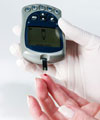Features
Botanical Options for Diabetes
Research points to the usefulness of many botanicals in the prevention and amelioration of blood sugar disorders.
By: Casey Adams

Research points to the usefulness of many botanicals in the prevention and amelioration of blood sugar disorders.
By: Casey Adams
